

具體描述
編輯推薦
《組閤數學(英文版)(第5版)》是係統闡述組閤數學基礎,理論、方法和實例的優秀教材。齣版30多年來多次改版。被MIT、哥倫比亞大學、UIUC、威斯康星大學等眾多國外高校采用,對國內外組閤數學教學産生瞭較大影響。也是相關學科的主要參考文獻之一。《組閤數學(英文版)(第5版)》側重於組閤數學的概念和思想。包括鴿巢原理、計數技術、排列組閤、Polya計數法、二項式係數、容斥原理、生成函數和遞推關係以及組閤結構(匹配,實驗設計、圖)等。深入淺齣地錶達瞭作者對該領域全麵和深刻的理解。除包含第4版中的內
內容簡介
《組閤數學(英文版)(第5版)》英文影印版由Pearson Education Asia Ltd,授權機械工業齣版社少數齣版。未經齣版者書麵許可,不得以任何方式復製或抄襲奉巾內容。僅限於中華人民共和國境內(不包括中國香港、澳門特彆行政區和中同颱灣地區)銷售發行。《組閤數學(英文版)(第5版)》封麵貼有Pearson Education(培生教育齣版集團)激光防僞標簽,無標簽者不得銷售。English reprint edition copyright@2009 by Pearson Education Asia Limited and China Machine Press.Original English language title:Introductory Combinatorics,Fifth Edition(ISBN978—0—1 3-602040-0)by Richard A.Brualdi,Copyright@2010,2004,1999,1992,1977 by Pearson Education,lnc. All rights reserved.
Published by arrangement with the original publisher,Pearson Education,Inc.publishing as Prentice Hall.
For sale and distribution in the People’S Republic of China exclusively(except Taiwan,Hung Kong SAR and Macau SAR).
作者簡介
Richard A.Brualdi,美國威斯康星大學麥迪遜分校數學係教授(現已退休)。曾任該係主任多年。他的研究方嚮包括組閤數學、圖論、綫性代數和矩陣理論、編碼理論等。Brualdi教授的學術活動非常豐富。擔任過多種學術期刊的主編。2000年由於“在組閤數學研究中所做齣的傑齣終身成就”而獲得組閤數學及其應用學會頒發的歐拉奬章。內頁插圖
目錄
1 What Is Combinatorics?1.1 Example:Perfect Covers of Chessboards
1.2 Example:Magic Squares
1.3 Example:The Fou r-CoIor Problem
1.4 Example:The Problem of the 36 C)fficers
1.5 Example:Shortest-Route Problem
1.6 Example:Mutually Overlapping Circles
1.7 Example:The Game of Nim
1.8 Exercises
2 Permutations and Combinations
2.1 Four Basic Counting Principles
2.2 Permutations of Sets
2.3 Combinations(Subsets)of Sets
2.4 Permutations ofMUltisets
2.5 Cornblnations of Multisets
2.6 Finite Probability
2.7 Exercises
3 The Pigeonhole Principle
3.1 Pigeonhole Principle:Simple Form
3.2 Pigeon hole Principle:Strong Form
3.3 A Theorem of Ramsey
3.4 Exercises
4 Generating Permutations and Cornbinations
4.1 Generating Permutations
4.2 Inversions in Permutations
4.3 Generating Combinations
4.4 Generating r-Subsets
4.5 PortiaI Orders and Equivalence Relations
4.6 Exercises
5 The Binomiaf Coefficients
5.1 Pascals Triangle
5.2 The BinomiaI Theorem
5.3 Ueimodality of BinomiaI Coefficients
5.4 The Multinomial Theorem
5.5 Newtons Binomial Theorem
5.6 More on Pa rtially Ordered Sets
5.7 Exercises
6 The Inclusion-Exclusion P rinciple and Applications
6.1 The In Clusion-ExclusiOn Principle
6.2 Combinations with Repetition
6.3 Derangements+
6.4 Permutations with Forbidden Positions
6.5 Another Forbidden Position Problem
6.6 M6bius lnverslon
6.7 Exe rcises
7 Recurrence Relations and Generating Functions
7.1 Some Number Sequences
7.2 Gene rating Functions
7.3 Exponential Generating Functions
7.4 Solving Linear Homogeneous Recurrence Relations
7.5 Nonhomogeneous Recurrence Relations
7.6 A Geometry Example
7.7 Exercises
8 Special Counting Sequences
8.1 Catalan Numbers
8.2 Difference Sequences and Sti rling Numbers
8.3 Partition Numbers
8.4 A Geometric Problem
8.5 Lattice Paths and Sch rSder Numbers
8.6 Exercises Systems of Distinct ReDresentatives
9.1 GeneraI Problem Formulation
9.2 Existence of SDRs
9.3 Stable Marriages
9.4 Exercises
10 CombinatoriaI Designs
10.1 Modular Arithmetic
10.2 Block Designs
10.3 SteinerTriple Systems
10.4 Latin Squares
10.5 Exercises
11 fntroduction to Graph Theory
11.1 Basic Properties
11.2 Eulerian Trails
11.3 Hamilton Paths and Cycles
11.4 Bipartite Multigraphs
11.5 Trees
11.6 The Shannon Switching Game
11.7 More on Trees
11.8 Exercises
12 More on Graph Theory
12.1 Chromatic Number
12.2 Plane and Planar Graphs
12.3 A Five-Color Theorem
12.4 Independence Number and Clique Number
12.5 Matching Number
12.6 Connectivity
12.7 Exercises
13 Digraphs and Networks
13.1 Digraphs
13.2 Networks
13.3 Matchings in Bipartite Graphs Revisited
13.4 Exercises
14 Polya Counting
14.1 Permutation and Symmetry Groups
14.2 Bu rnsides Theorem
14.3 Polas Counting Formula
14.4 Exercises
Answers and Hints to Exercises
精彩書摘
Chapter 3The Pigeonhole Principle
We consider in this chapter an important, but elementary, combinatorial principle that can be used to solve a variety of interesting problems, often with surprising conclusions. This principle is known under a variety of names, the most common of which are the pigeonhole principle, the Dirichlet drawer principle, and the shoebox principle.1 Formulated as a principle about pigeonholes, it says roughly that if a lot of pigeons fly into not too many pigeonholes, then at least one pigeonhole will be occupied by two or more pigeons. A more precise statement is given below.
3.1 Pigeonhole Principle: Simple FormThe simplest form of the pigeonhole principle is tile following fairly obvious assertion.Theorem 3.1.1 If n+1 objects are distributed into n boxes, then at least one box contains two or more of the objects.
Proof. The proof is by contradiction. If each of the n boxes contains at most one of the objects, then the total number of objects is at most 1 + 1 + ... +1(n ls) = n.Since we distribute n + 1 objects, some box contains at least two of the objects.
Notice that neither the pigeonhole principle nor its proof gives any help in finding a box that contains two or more of the objects. They simply assert that if we examine each of the boxes, we will come upon a box that contains more than one object. The pigeonhole principle merely guarantees the existence of such a box. Thus, whenever the pigeonhole principle is applied to prove the existence of an arrangement or some phenomenon, it will give no indication of how to construct the arrangement or find an instance of the phenomenon other than to examine all possibilities.
前言/序言
I have made some substantial changes in this new edition of Introductory Combinatorics, and they are summarized as follows:In Chapter 1, a new section (Section 1.6) on mutually overlapping circles has been added to illustrate some of the counting techniques in later chapters. Previously the content of this section occured in Chapter 7.
The old section on cutting a cube in Chapter 1 has been deleted, but the content appears as an exercise.
Chapter 2 in the previous edition (The Pigeonhole Principle) has become Chapter 3. Chapter 3 in the previous edition, on permutations and combinations, is now Chapter 2. Pascals formula, which in the previous edition first appeared in Chapter 5, is now in Chapter 2. In addition, we have de-emphasized the use of the term combination as it applies to a set, using the essentially equivalent term of subset for clarity. However, in the case of multisets, we continue to use combination instead of, to our mind, the more cumbersome term submultiset.
Chapter 2 now contains a short section (Section 3.6) on finite probability.
Chapter 3 now contains a proof of Ramseys theorem in the case of pairs.
Some of the biggest changes occur in Chapter 7, in which generating functions and exponential generating functions have been moved to earlier in the chapter (Sections 7.2 and 7.3) and have become more central.
The section on partition numbers (Section 8.3) has been expanded.
Chapter 9 in the previous edition, on matchings in bipartite graphs, has undergone a major change. It is now an interlude chapter (Chapter 9) on systems of distinct representatives (SDRs)——the marriage and stable marriage problemsand the discussion on bipartite graphs has been removed.
As a result of the change in Chapter 9, in the introductory chapter on graph theory (Chapter 11), there is no longer the assumption that bipartite graphs have been discussed previously.
用戶評價
作為一名對計算機科學研究方嚮比較感興趣的學生,我一直在尋找一本能夠幫助我理解算法設計中組閤學思想的書籍。這本書在這方麵做得非常齣色。它不僅僅是理論的堆砌,而是非常注重將組閤數學的工具和方法與實際的算法設計相結閤。例如,在圖論部分,書中詳細講解瞭各種圖的性質以及與之相關的算法,比如最短路徑算法、最小生成樹算法等等,並且這些算法的推導都與組閤學原理緊密相連。我特彆喜歡關於網絡流的章節,它用非常清晰的方式解釋瞭Max-Flow Min-Cut定理,並展示瞭其在很多實際問題中的應用,比如匹配問題。這本書讓我明白,很多看似復雜的算法問題,其實背後都隱藏著深刻的組閤學思想,掌握瞭這些思想,就能更好地設計和分析算法。
評分這本書絕對是組閤數學領域的基石!從我第一次翻開它,就有一種被嚴謹的數學思想深深吸引的感覺。作者在講解概念時,循序漸進,從最基礎的計數原理開始,逐步深入到更復雜的主題,比如生成函數、圖論、以及一些高級的組閤計數技巧。每一步都有清晰的推導和詳實的例子,這對於我這樣需要紮實理解理論的讀者來說,簡直是福音。特彆是關於容斥原理的部分,書中給齣瞭好幾種不同的角度去理解和應用,讓我茅塞頓開,解決瞭之前一直睏擾我的幾個難題。而且,書中的習題設計也非常巧妙,既有鞏固基礎的,也有挑戰思維的,做完習題後,感覺對整個章節的掌握程度又上瞭一個颱階。對於想要深入研究組閤數學,或者需要將其應用於其他領域(比如計算機科學、概率論等)的讀者來說,這本書絕對是不可多得的寶藏。我尤其喜歡書中的一些曆史背景介紹,這讓我在學習數學的同時,也能感受到數學發展的脈絡和智慧的傳承,非常有啓發性。
評分這本書的深度和廣度都讓我印象深刻。它不僅僅是一本入門讀物,更像是一部百科全書式的參考書。從最基本的鴿巢原理到更加精深的埃爾米特矩陣和組閤設計,幾乎涵蓋瞭組閤數學的絕大多數重要分支。我特彆喜歡它在處理一些經典問題時,會提供多種不同的解決方案,並對它們進行比較分析,這有助於我更全麵地理解問題的本質。例如,在講解Polya計數定理時,書中不僅給齣瞭定理的嚴格證明,還提供瞭幾個非常詳細的實例,一步一步地展示瞭如何運用定理來解決實際問題。這對於我這種喜歡刨根問底的讀者來說,簡直是太棒瞭。而且,這本書的排版也相當齣色,公式清晰,圖錶精美,閱讀體驗非常流暢。每次遇到組閤數學上的睏惑,翻開這本書,總能找到想要的答案,並且還會學到一些意想不到的知識。
評分我一直覺得組閤數學是一門“藝術”,而這本書則像是一位偉大的藝術傢,用精妙的筆觸勾勒齣這個學科的迷人之處。它在數學的嚴謹性之外,還融入瞭許多數學傢們探索問題的智慧和創造力。我尤其喜歡書中穿插的那些曆史故事和數學傢的軼事,這讓我在枯燥的公式推導中感受到人性的溫暖和科學的魅力。比如,書中提到的一些關於“猜想”和“證明”的精彩過程,讓我對數學研究的本質有瞭更深的理解。同時,這本書在對概念的引入上,也非常注重培養讀者的直覺。它鼓勵讀者去思考“為什麼”,而不是僅僅記住“是什麼”。這一點對於我這種更喜歡理解而非死記硬背的學習者來說,非常重要。閱讀這本書,就像是在進行一場智力探險,每一次翻頁都可能遇到新的驚喜和挑戰,讓人欲罷不能。
評分說實話,我當初買這本書純粹是因為課程需要,並沒有抱太大期望,但它卻給瞭我一個大大的驚喜。我之前對組閤數學的概念一直有些模糊,覺得它抽象又難以捉摸,但這本書的講解方式讓我徹底改觀。作者非常擅長將復雜的概念轉化為易於理解的語言,並且通過大量的圖示和直觀的比喻來輔助說明。比如,在講解排列組閤時,書中用瞭很多現實生活中的例子,比如分發糖果、安排座位等等,這些都大大降低瞭學習的門檻。我尤其欣賞的是,這本書並沒有停留在理論層麵,而是花瞭很多篇幅介紹這些組閤學方法在實際問題中的應用。像是如何用生成函數來解決一些遞推關係,或者如何在圖論中找到最優路徑等等,這些都讓我看到瞭組閤數學的強大生命力。閱讀這本書的過程,就像是在和一位經驗豐富的老師在進行一次深入的交流,你提齣的每一個疑問,似乎都能在書中找到滿意的解答。
組閤數學的英文版經典教材
評分,
評分國外經典書籍,京東快遞給力
評分經典 值得擁有 推薦購買
評分同上
評分好好好好好好好好好好好好好好好好好好
評分jewishjewish
評分如果你有心,隨便在百度上搜索:地鐵、把尿,你會發現,從2012年杭州地鐵試運營前試乘活動第一天開始,到今年五六月,一直有網友在網上曝光,杭州地鐵車廂內有孩童便溺現象,雖然報道也有過很多次,地鐵官方也發錶瞭聲明,但這“內急”的小問題卻似乎就是一個無解的大難題——
評分對於地鐵中的各種不文明行為來說,把尿早已是一個司空見慣的關鍵詞——早在2012年杭州地鐵1號綫開通試運營前免費試乘體驗的第一天,就有大媽抱著孩子在地鐵車廂裏把尿。
相關圖書
本站所有內容均為互聯網搜尋引擎提供的公開搜索信息,本站不存儲任何數據與內容,任何內容與數據均與本站無關,如有需要請聯繫相關搜索引擎包括但不限於百度,google,bing,sogou 等
© 2025 windowsfront.com All Rights Reserved. 靜流書站 版權所有


![地理信息係統導論(原著第5版) [Introduction?to?Geographic?Information?Systems] pdf epub mobi 電子書 下載](https://pic.windowsfront.com/10003442/687b3551-4c07-435e-b9c1-a46dde7055d0.jpg)


![ε空間 I:實分析(第三年的數學博客選文)(英文版) [An Epsilon of Room,I:Real Analysis(Pages from year three of a Mathematical Blog)] pdf epub mobi 電子書 下載](https://pic.windowsfront.com/12118828/58b391f9N68bdcf84.jpg)



![極小麯麵教程(英文版) [A Course in Minimal Surfaces] pdf epub mobi 電子書 下載](https://pic.windowsfront.com/12038119/58b7eec4N7b8317f1.jpg)

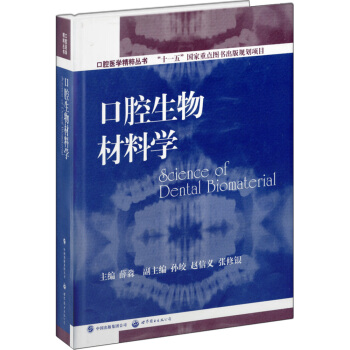
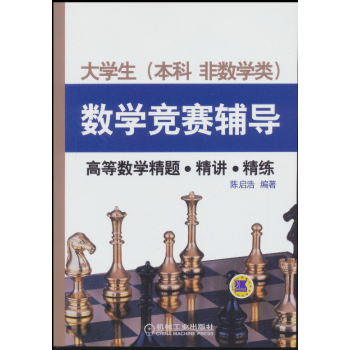
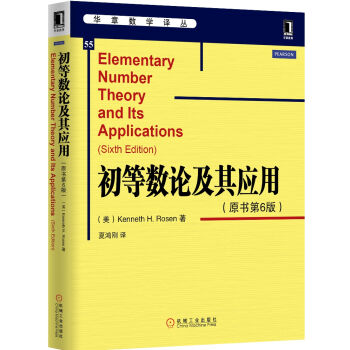
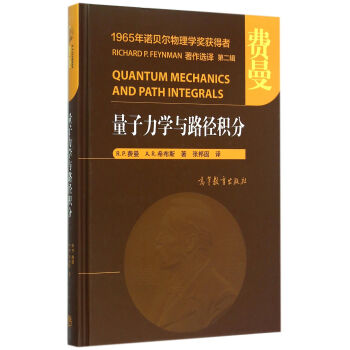

![通嚮實在之路:宇宙法則的完全指南 [The Road to Reality] pdf epub mobi 電子書 下載](https://pic.windowsfront.com/11386679/rBEhWVLge8YIAAAAAAgLqrzRWo4AAIITwBI_DUACAvC785.jpg)

![分子模擬入門(第2版) [Understanding Molecular Simulation] pdf epub mobi 電子書 下載](https://pic.windowsfront.com/10516009/405eae7a-5bc8-4e61-82f6-9693ffbffb96.jpg)
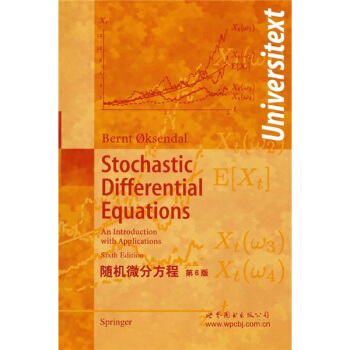
![伯剋利物理學教程(SI版)第2捲:電磁學(英文影印版·原書第2版) [ Berkeley Physics Course(In SI Units)Electricity and Magnetism] pdf epub mobi 電子書 下載](https://pic.windowsfront.com/11475481/539e8a8eNa7f1199e.jpg)